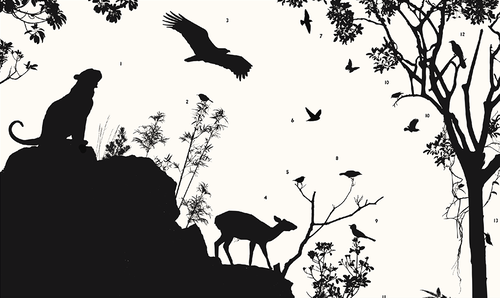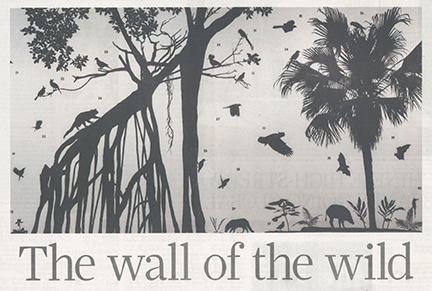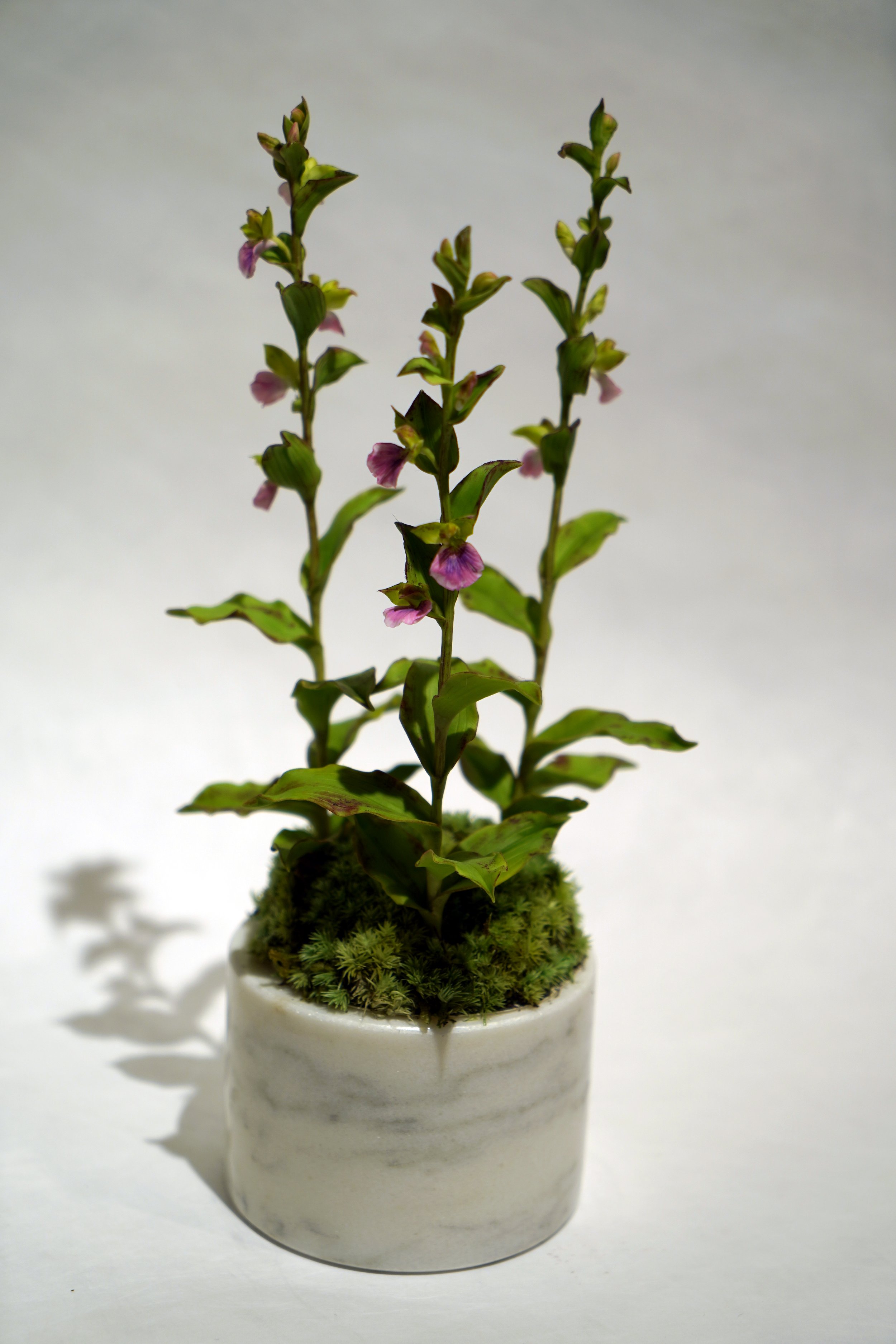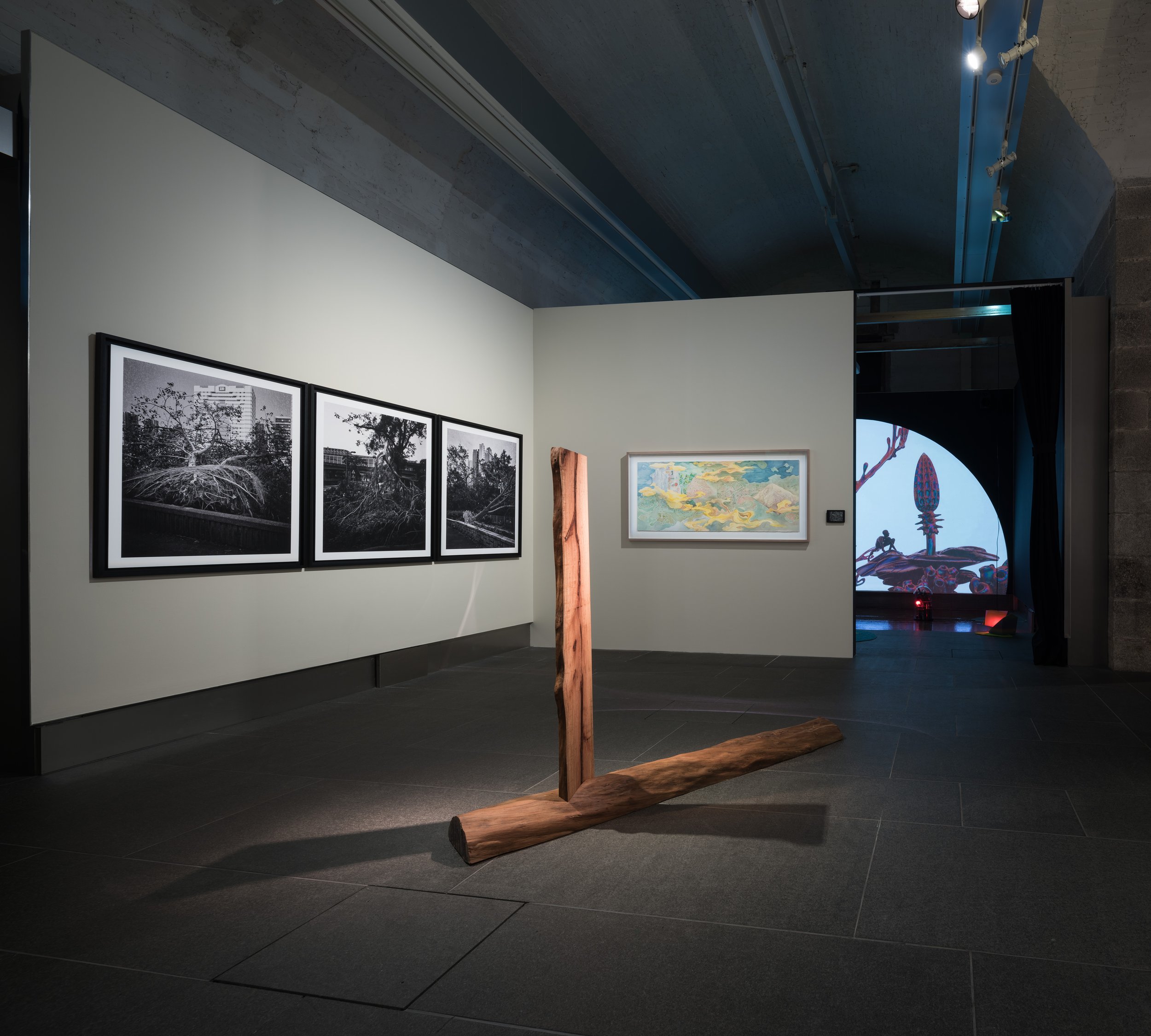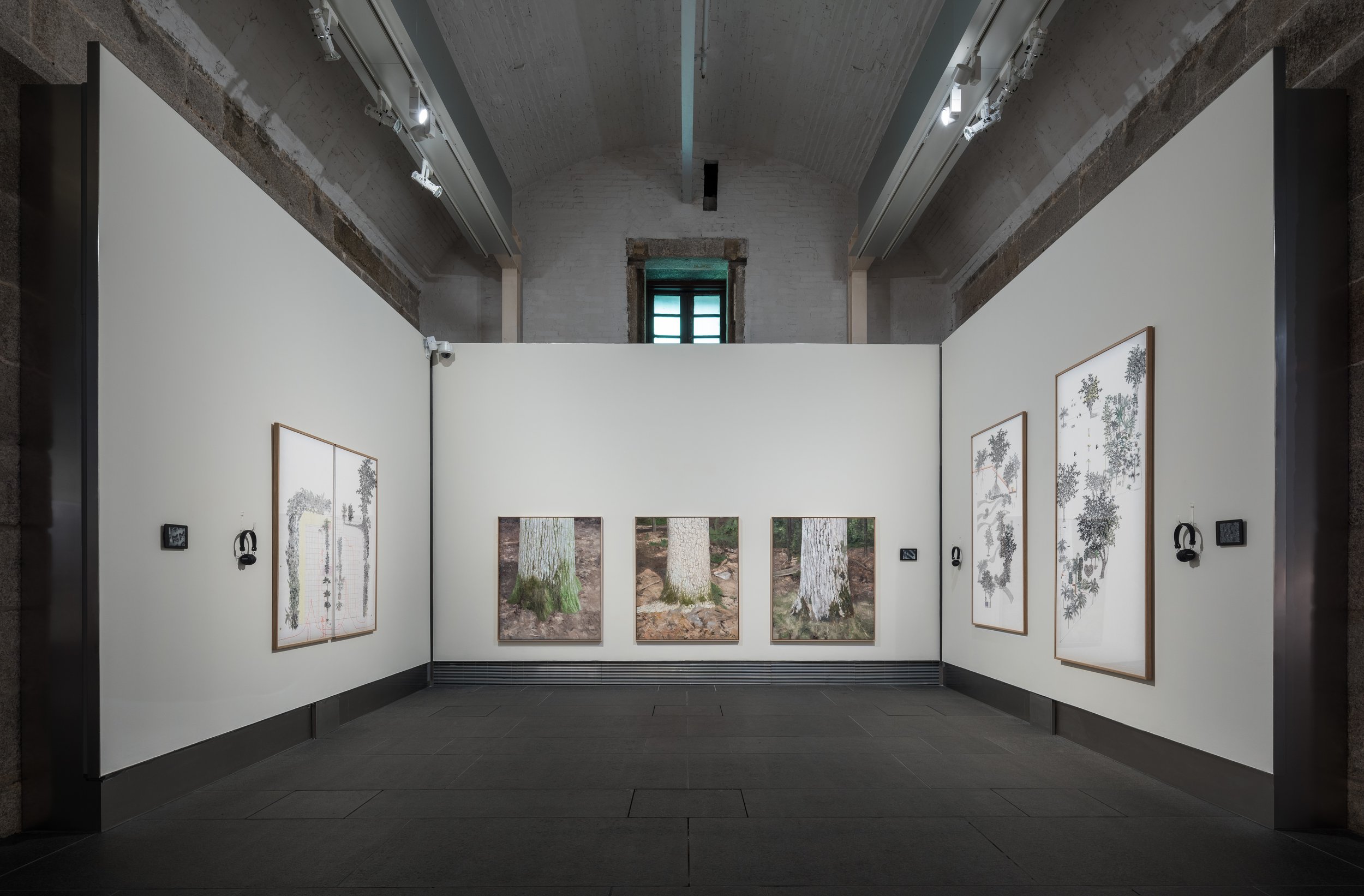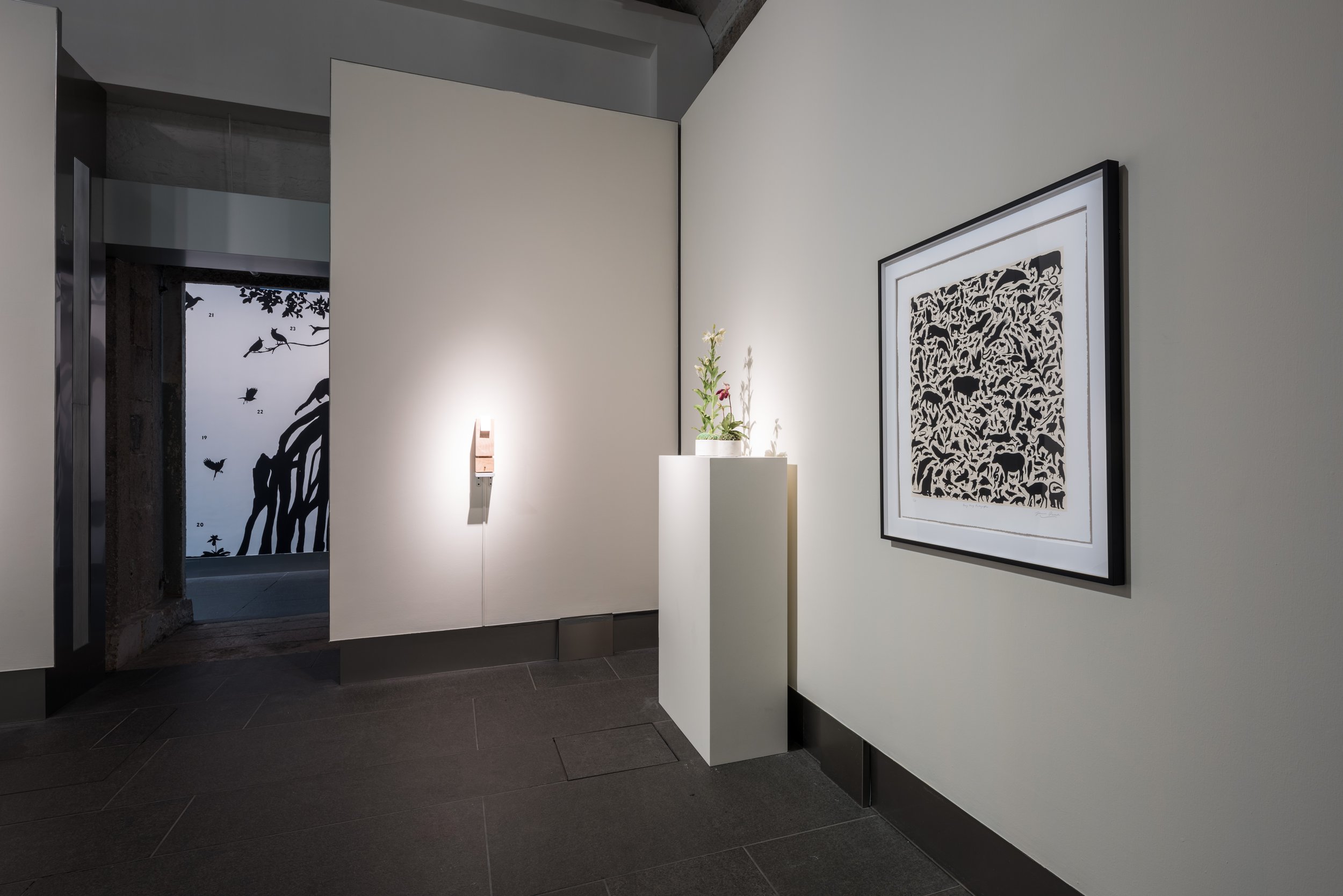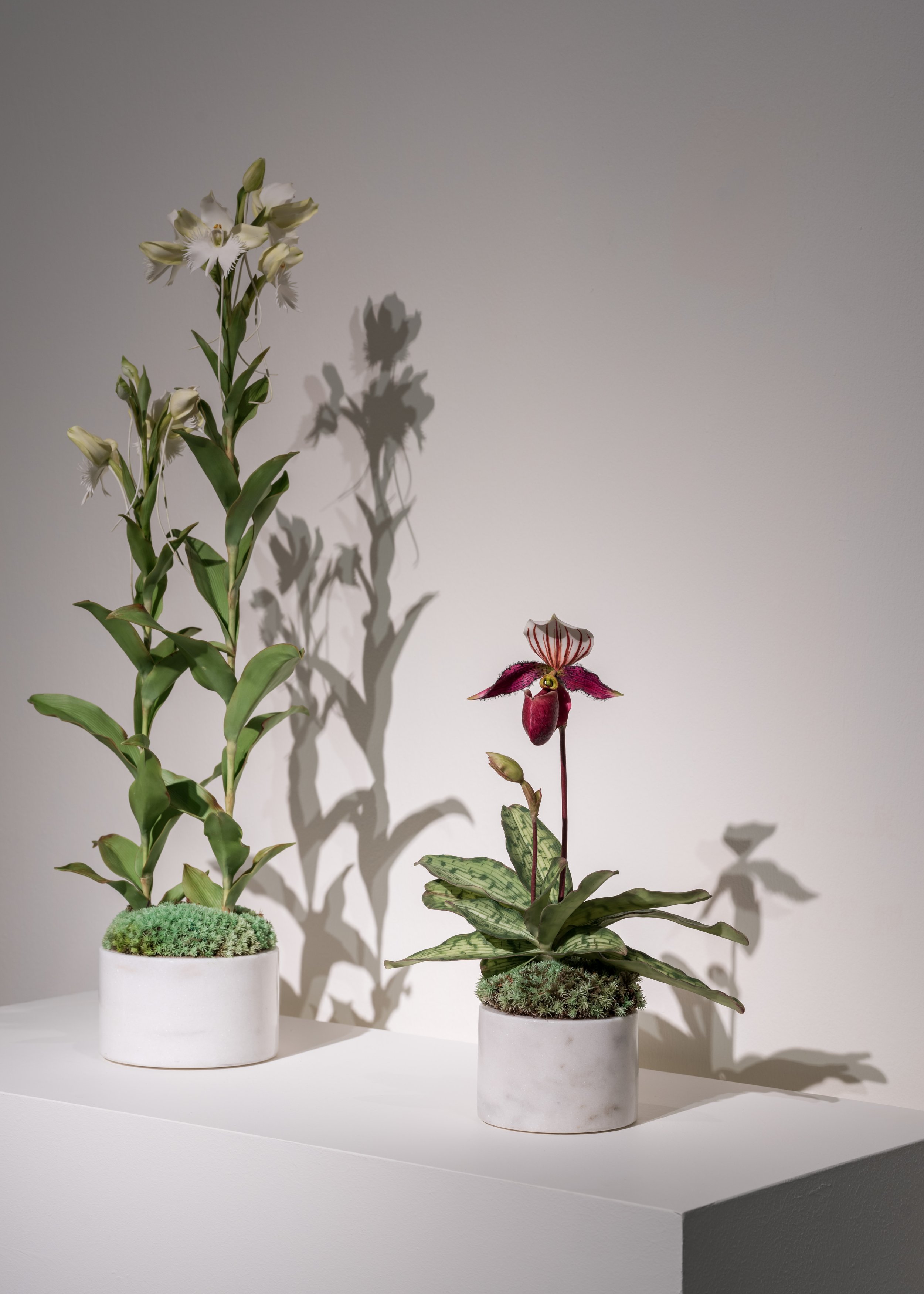To See the Forest and the Trees
Based on field research and consultation with local ecologists, this 16-meter panoramic mural depicts Hong Kong’s diverse flora and fauna from the mountains to coastal mangroves. Illustrated like a field guide—a book designed to help identify wildlife—organisms are labeled, yet without an identification key. The absence of a key is intended to make us think about how we name and classify nature, and how nomenclature frames and filters our understanding of and interaction with plants and animals. What wildlife can you identify and which ones intrigue you to learn more?
Prosek visited Hong Kong in spring and spent time in the mountains and the mangroves learning about the flora and fauna of the island. The mural is based on that research. It was installed in July, painted entirely by hand.
Responding to Hong Kong’s devastating loss of trees caused by the tropical cyclone Typhoon Mangkhut in September 2018, Asia Society Hong Kong Center presents To See the Forest and the Trees, a summer arts and culture project that explores the role and significance of trees within our environment, culture and history. Inspired by the expression, “cannot see the forest for the trees,” which describes when one fails to grasp the big picture by focusing only on a certain aspect, the project addresses the urgency to pay attention to the well-being and future of our planet in dire geological decline. Through a visual art exhibition, related site-specific performances and community programs, To See the Forest and the Trees promotes the importance of environmental protection to engineer a sustainable future.
This community engagement project brings together local artistic talent and expert ecologists to strengthen understanding about forestry and biodiversity in Hong Kong. The exhibition will feature local contemporary artists, as well as international artists inspired by the city’s rich ecology. Their artworks serve to address urgent environmental themes of local and global relevance, with new commissions created in consultation with local ecological scientists, including Dr. Jim Chi-Yung, Research Chair Professor at the Department of Social Sciences, Hong Kong Education University; Dr. Gunter Fischer, Head of Flora Conservation at Kadoorie Farm and Botanic Garden; Dr. Richard Saunders, Professor of the School of Biological Sciences, University of Hong Kong; Dr. Stefano Cannicci, Associate Professor of the School of Biological Sciences, University of Hong Kong; and Dr. Billy Hau, Principal Lecturer, University of Hong Kong.
The exhibition is organized as a journey that begins by looking at how trees are rooted in the social, cultural and historical fabric of Hong Kong. Monochrome photographs by South Ho (b. 1984) documenting the aftermath of Typhoon Mangkhut opens the exhibition. The super typhoon caused a record-breaking 54,000 fallen trees in a day, with potentially double the amount in reality. Capturing many large broken urban trees that once stood by roadsides, parks and waterfronts, Ho’s photographs reflect on Hong Kong’s green infrastructure and the unassuming yet vital presence of trees in our urban space. Installations by Trevor Yeung (b. 1988) bring attention to the need to preserve natural beauty in the face of environmental pollution and disaster. A commissioned animated projection featuring the character of the British “plant hunter” by VV Kook (b. 1990) then takes us 150 years back in time to explore how the city’s primeval trees and botany played a role in imperialism and Hong Kong’s colonial history. While a series of site-inspired ink paintings, and related outdoor musical performances, by Frank Tang (b. 1988) returns us to the contemporary landscape by mapping the heritage trees at the Former Explosives Magazine surviving from the colonial era.
Branching out beyond the local context, the exhibition includes paintings by Thai artist Natee Utarit (b. 1970) from his series Untitled Poems by Théodore Rousseau (2017) that portray nuanced oak tree trunks from the Fontainebleau forest in France. Responding to the 19th century landscape tradition of the Barbizon School led by Théodore Rousseau, Utarit’s tree portraits depart from his usual narrative mode to reflect on the simple wonder and quiet majesty of man looking at nature. Another video work, The Great Silence (2014), by Puerto Rican artist duo Allora & Calzadilla (est. 1995), in collaboration with science fiction writer Ted Chiang, tells a story of scientific pursuit and animal extinction. Narrated from the perspective of critically endangered Amazona vittata parrots, the video reflects on human oversight of the rich biodiversity on earth in the search for intelligent life in outer space.
Threading through the entire exhibition is a commissioned panoramic mural by American artist James Prosek (b. 1975) illustrating the diverse flora and fauna of Hong Kong past and present from our coastal mangroves to lush mountains. Less perceptible to the eye, an olfactory installation by artisan perfumer Haley van Oosten, The Ripening of Mangosteen: A Scent Offering in Fragments, permeates the gallery. Created from incense woods and resins distilled through uprooted mangroves in Shek-O after Typhoon Mangkhut, van Oosten’s installation opens our senses to the intangible effects of climatic change and devastation. Finally, a section of the gallery space will be transformed into an on-going performance platform with an ecology-inspired music program curated by the local composer, Charles Kwong, performed by local musicians.
Throughout the exhibition period, local wood up-cycling organization, Post Tree Lifestyle, will also engage the audience to create an outdoor participatory installation on the roof garden of ASHK. Titled “Cloud,” the installation will be built from 1000 pieces of upcycled wood blocks using post-Typhoon Mangkhut tree debris. The installation will take the shape of a giant cloud upon completion, and the building woodblocks feature various cloud patterns from different Asian cultures. Just as water and cloud are different states of the same substance, tree and wood are also different states of the same material. By using the concept of the cloud, the installation aims to bring awareness to the process of urban wood upcycling, and congeal the community for environmental activism. The audience will get to create their own wood block before adding it to the community installation.
A series of related community programs in partnership with local universities, nature organizations and educators, including thematic tours, nature walks, workshops, performances and more, extend the topics of learning introduced in the exhibition to engage the public in first-hand learning about the impact and consequences of human intervention in nature and the importance of biodiversity protection and sustainability.
July 6, 2019 - September 8, 2019
Asia Society Hong Kong Center
9 Justice Drive
Admiralty, Hong Kong
